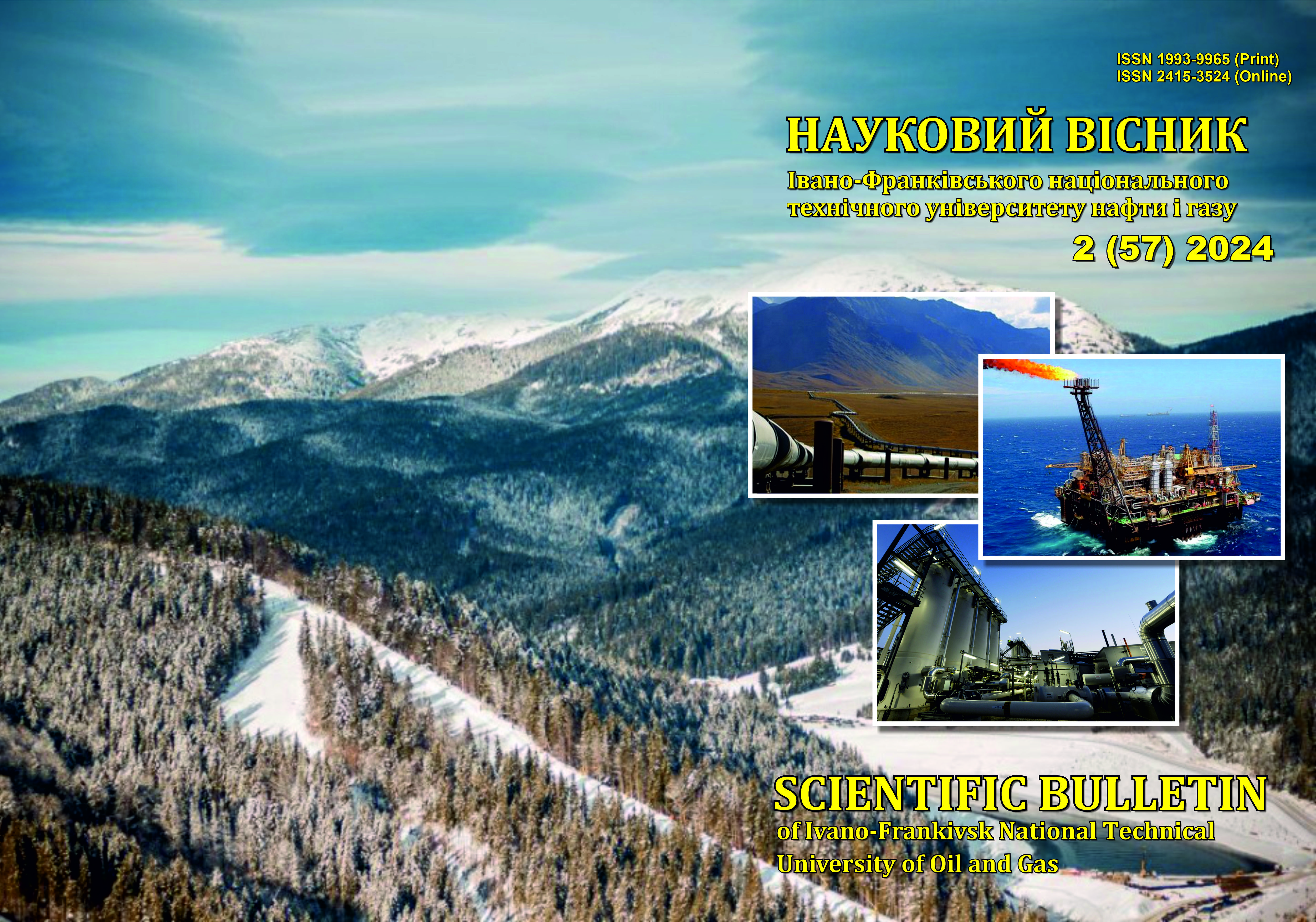RESEARCH ON THE TECHNOLOGICAL INHERITANCE OF SURFACE ROUGHNESS OF TITANIUM IN TWO-STAGE PROCESSING METHODS: END MILLING AND FEMTOSECOND LASER TEXTURING
DOI:
https://doi.org/10.31471/1993-9965-2024-2(57)-67-77Keywords:
technological process, titanium, technological inheritance, milling, laser processing, LIPSS, hydrophobicity, contact angle, wettability, microhardness, friction, wear, microstructuresAbstract
Titanium and its alloys are widely used in modern technologies due to their unique physical and mechanical properties, such as high strength, corrosion resistance, and biocompatibility. In this context, the hydrophobicity and hydrophilicity of treated surfaces take precedence. This study analyzes titanium surfaces' technological inheritance and adsorption properties after end milling and femtosecond laser processing. The change in hydrophobic properties of titanium surfaces after milling and subsequent femtosecond laser irradiation is investigated. It is demonstra-ted that the surface topography after milling can influence the formation of laser-induced periodic surface structures (LIPSS). It is determined that to minimize the impact of technological inheritance, sufficient depth of laser ablation is required, exceeding the height of micro-roughnesses after milling. Experimental results show that the surface of titanium after rolling has an average contact angle of approximately 81.65°, while after milling, this value decreases to 66.35°. An analysis is conducted on the effect of laser irradiation at different intensities on the hydro-phobicity of titanium surfaces. It is found that at low laser intensities (2 µJ), the formation of LIPSS structures does not completely eliminate the traces of mechanical processing, indicating the preservation of technological inheritance. As the pulse energy increases to 3.5 µJ and above, the surface becomes more uniform, and the effect of milling on hydrophobic properties gradually diminishes. It is established that cleaning the titanium surface with alcohol temporarily reduces its hydrophobicity, suggesting the presence of adsorbed impurities that may influence wettability. The relationship between the surface topography after milling, laser irradiation energy, and contact angles of wettability is discussed. The results demonstrate that a combination of mechanical milling and femto-second laser irradiation, i.e., a two-stage processing technique, allows for the regulation of titanium surface properties, particularly its hydrophilicity or hydrophobicity. This can be applied in practical uses where controlling the wettability of titanium surfaces is critical, such as in biomedical implants, aerospace, and electronics industries.
Downloads
References
Banerjee S., Mukherjee P. Titanium: Processing, Applications, and Properties. Cambridge University Press, 2020
Long M., Rack H. J. Titanium alloys in total joint replacement – A materials science perspective. Biomaterials. 1998. Vol. 19, No 18. P. 1621–1639. https://doi.org/10.1016/S0142-9612(98)00034-0
Vorobyev A., Guo C. Direct femtosecond laser surface structuring of metals. Optics Express. 2005. Vol. 14, No 6. P. 2164–2169. https://doi.org/10.1364/OPEX.14.002164
Liu Y., Rajput S., et al. Hydrophobicity control of titanium surfaces using femtosecond laser pulses. Applied Surface Science. 2018. Vol. 435. P. 852–859. https://doi.org/10.1016/j.apsusc.2017.11.007
Jiang L., Zhao Y., Zhai J. A lotus-leaf-like superhydrophobic surface: A porous micro-?phere/nanofiber composite film prepared by electrohydrodynamics. Angewandte Chemie International Edition. 2004. Vol. 43, No 33. P. 4338–4341. https://doi.org/10.1002/anie.200460541
Lin X., Liang C., Li Y., Geng Y., Chen Z., Zhao Y., Chen X., Wu J., Wu S. Review: Laser shock processing technique on the additive manufactured metallic alloys. Journal of Laser Applications. 2024. Vol. 36, No 3. https://doi.org/10.2351/7.0001411
Demir A. G., Fortunato A., Zaeh M. F. Editorial. Lasers in Manufacturing and Materials Processing. 2024. Vol. 11, No 1. P. 1–2. https://doi.org/10.1007/s40516-024-00249-6
Wang X., Huang Y., Li C., Xu B. Numerical simulation and experimental study on picosecond laser ablation of stainless steel. Optics & Laser Technology. 2020. Vol. 127. art. no. 106150. https://doi.org/10.1016/j.optlastec.2020.106150
Wang Y., Li H. Effect of Initial Surface Roughness on Laser-Induced Periodic Surface Structures Formation. Optics and Lasers in Engineering. 2023. Vol. 162. P. 107–115. https://doi.org/10.1016/j.optlaseng.2023.107115
Savriama G. TUTORIAL: Two Temperature Model for Ultrashort Pulse Laser with COMSOL Multiphysics. 2021, July 9. https://doi.org/10.13140/RG.2.2.24211.81449
Smith J.D., Brown A.L. Influence of Cutting Tool Geometry on Surface Roughness in Milling Processes. Int. J. Adv. Manuf. Technol. 2021. Vol. 115, No. 3. P. 789–802.
Miller R.T., Johnson P.R. Optimization of Cutting Parameters to Minimize Surface Roughness in End Milling. J. Manuf. Process. 2020. Vol. 58. P. 615–623.
Bembenek M., Dzienniak D., Dzindziora A., Sułowski M., Ropyak L. Investigation of the Impact of Face Milling Parameters on the Roughness of the Machined Surface for 1.4301 Steel. Adv. Sci. Technol. Res. J. 2023. Vol. 17, No. 4. P. 299–312. https://doi.org/10.12913/22998624/170422
Davis L.E., Thompson S.M. The Impact of Vibrations on Surface Integrity during Milling Operations. Precis. Eng. 2022. Vol. 72. P. 456–467.
Kombarov V., Sorokin V., Tsegelnyk Y., Plankovskyy S., Aksonov Y., Fojtů O. Numerical Control of Machining Parts from Aluminum Alloys with Sticking Minimization. Int. J. Mecha-tron. Appl. Mech. 2021. Vol. 1, No. 9. P. 209–216. https://doi.org/10.17683/IJOMAM/ISSUE9.30
Wang X., Huang Y., Li C., Xu B. Numerical Simulation and Experimental Study on Picosecond Laser Ablation of Stainless Steel. Optics & Laser Technology. 2020. Vol. 127. art. no. 106150. https://doi.org/10.1016/j.optlastec.2020.106150
Wang Y., Li H. Effect of Initial Surface Roughness on Laser-Induced Periodic Surface Structures Formation. Opt. Lasers Eng. 2023. Vol. 162. P. 107–115.
Bonse J., Koter R., Hartelt M., Spaltmann D., Pentzien S., Höhm S., Rosenfeld A.B., Krüger J.K. Femtosecond Laser-Induced Periodic Surface Structures on Steel and Titanium Alloy for Tribological Applications. 2014. Vol. 117, No. 1. P. 103–110. https://doi.org/10.1007/s00339-014-8229-2
Miyagawa R., Kamibayashi D., Nakamura H., Hashida M., Zen H., Somekawa T., Matsuoka T., Ogura H., Sagae D., Seto Y., Shobu T., Tominaga A., Eryu O., Ozaki N. Crystallinity in Periodic Nanostructure Surface on Si Substrates Induced by Near- and Mid-Infrared Femtosecond Laser Irradiation. Sci. Rep. 2022. Vol. 12, No. 1. https://doi.org/10.1038/s41598-022-25365-1
Kristensen A., Yang J.K.W., Bozhevolnyi S.I., Link S., Nordlander P., Halas N.J., Mortensen N.A. Plasmonic Colour Generation. Nat. Rev. Mater. 2016. Vol. 2, No. 1. https://doi.org/10.1038/natrevmats.2016.88
Abellán-Nebot J.V., Vila Pastor C., Siller H.R. A Review of the Factors Influencing Surface Roughness in Machining and Their Impact on Sustainability. Sustainability. 2024. Vol. 16, No. 5. art. no. 1917. https://doi.org/10.3390/su16051917
Zawadzki P., Dobrotvorskiy S., Aleksenko B., Talar R. Effect of Nano-Second Laser Texturization on Tribological Behavior of AISI 321 Stainless Steel. Materials. 2024. Vol. 17, No. 23. art. no. 5870. https://doi.org/10.3390/ma17235870
Martínez E., Lejeune N., Frechilla J., Porta-Velilla L., Fourneau E., Angurel L.A., de F., Bonse J., Silhanek A.V., Badía-Majós A. Laser Engineered Architectures for Magnetic Flux Manipulation on Superconducting Nb Thin Films. Appl. Surf. Sci. 2024. art. no. 161214. https://doi.org/10.1016/j.apsusc.2024.161214
Downloads
Published
How to Cite
Issue
Section
License
Авторські права....


1.png)

















